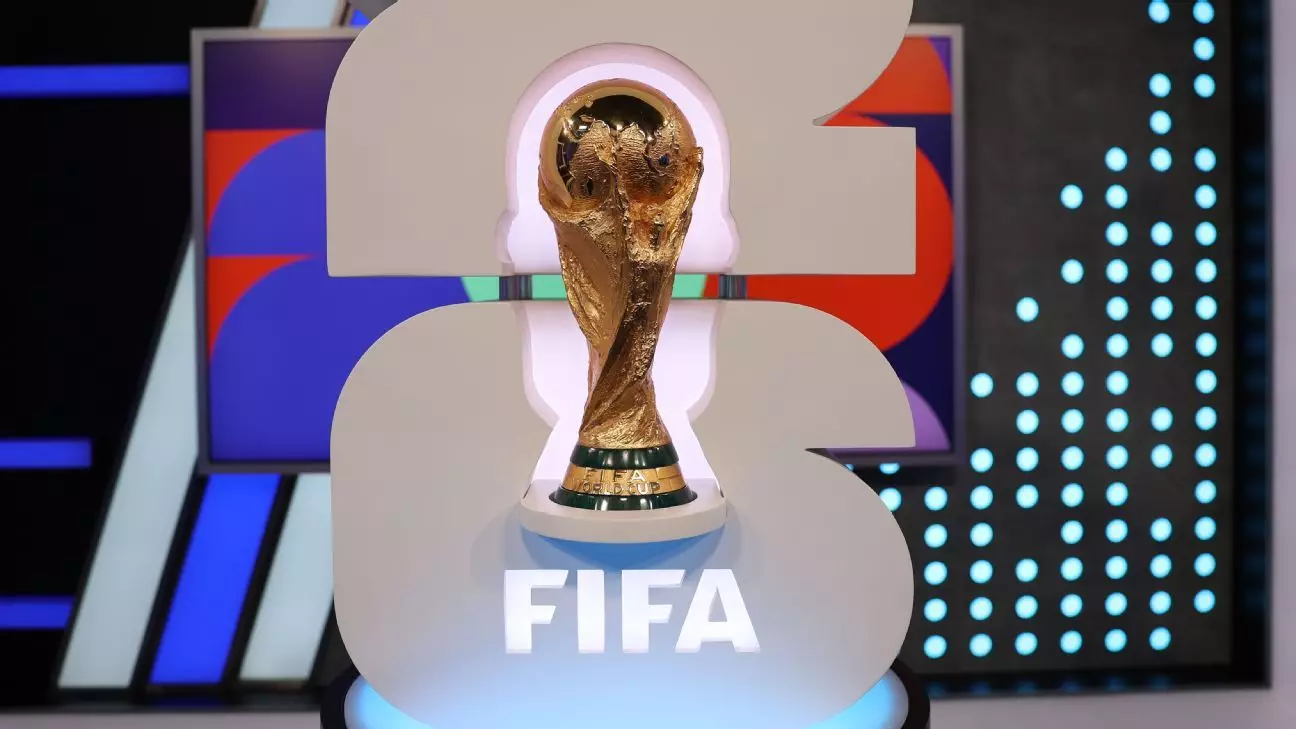As the excitement builds for the 2026 FIFA World Cup, which will be jointly hosted by the United States, Mexico, and Canada, European teams are gearing up for the qualifying draw scheduled for December 13. This significant event will determine the paths that various European nations will take in pursuit of a spot in the tournament. As the qualifying campaigns commence, fans and analysts alike are eager to dissect the complexities involved in the Union of European Football Associations (UEFA) qualifying structure.
The draw set for December 13 will lay the groundwork for the qualifying rounds. UEFA’s current framework has placed teams into different pots according to their FIFA rankings. Notably, the eight teams that reached the quarterfinals of the UEFA Nations League (UNL) are automatically placed in Pot 1. This is further complemented by the presence of historically strong teams like England, Belgium, Switzerland, and Austria. The strategic placement of these teams is particularly crucial as they ensure that upcoming friendlies and draft dates are respected, given the congested international calendar.
The rationale behind this potting system is to facilitate competitive balance, though it inherently brings a layer of complexity to the proceedings. With only a small select group enjoying guaranteed favorable placements in the draw, the remaining teams from Pots 2, 3, and 4 will have to navigate more challenging routes starting in March. This format has stirred debate about fairness, especially for lower-ranked teams that might face tougher opponents due to their grouping.
Adding another layer of intricacy to the draw is the new promotion and relegation playoff mechanism, implemented at the end of November. Originally, all teams involved in playoffs were to be grouped together in a manner that ensured they would not face the strongest teams. However, the amendment to these regulations, which removed the preferential treatment for teams in the playoff process, has significant implications for the teams involved. With both Austria and Belgium engaged in playoffs, the potential for them to be placed in lower seeding groups alongside superior opponents could dramatically impact their qualification chances.
This approach raises critical questions about competitive fairness, especially considering that some teams may end up in significantly harder groups while others enjoy a relatively easier path. The procedural changes reflect a responsive governance model aimed at increasing the excitement of the qualifying rounds.
The configuration of groups during the qualifying rounds is paramount. The draw will result in a total of 54 active nations being funneled into 12 groups, with six containing five countries and the other six featuring four teams each. This balancing act aims to create competitive integrity, allowing lower-ranked nations opportunities to shine while not being completely overwhelmed by higher-ranked teams.
A pivotal aspect of this configuration revolves around the limitations on group sizes when teams involved in playoffs are considered. A group containing a team from the playoffs must contain only a single playoff team, which significantly complicates the distribution from Pots 2, 3, and 4. The strategic implications of such a rule cast doubt on the potential outcomes, making each draw moment of heightened tension.
Starting from March, the journey toward the World Cup becomes real. Teams in five-member groups will commence their campaigns immediately while those in four-member groups will wait until September to forge their paths. The contrasting timelines raise questions regarding how match results will cascade through various groups and influence playoff spots.
One fascinating development is the expansion of direct qualification slots from UEFA, rising from 13 to 16 for this World Cup edition. This increase not only highlights the significance of the tournament but also opens the door for more nations to dream about participating. Among the 12 group winners, the path for runners-up will remain competitive, with them entering a playoff round that involves additional complexity arising from the Nations League’s impact.
As we approach the draw that will kickstart the road to the 2026 FIFA World Cup, we must anticipate an intricate series of events driven by regulations that consider both competitive fairness and ranking systems. The evolving landscape of international football means that each qualifying campaign can be drastically different, offering surprises, challenges, and opportunities. Fans, analysts, and teams will undoubtedly be glued to their screens as the draw unfolds, anticipating their fate and the journeys they are destined to take on this grand stage of global football. This event promises not just a showcase of skills but a demonstration of the enduring spirit of competition that defines the sport.

Leave a Reply